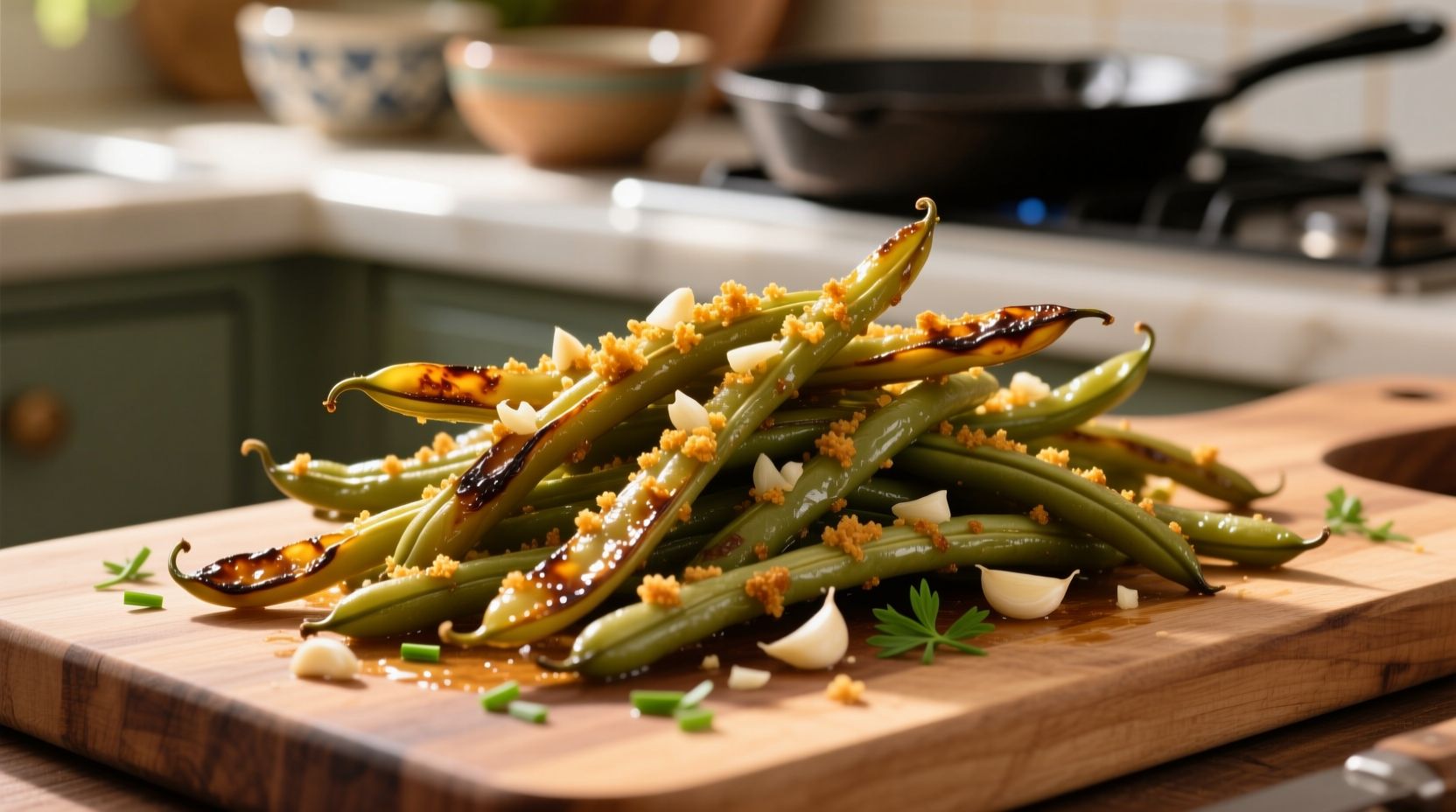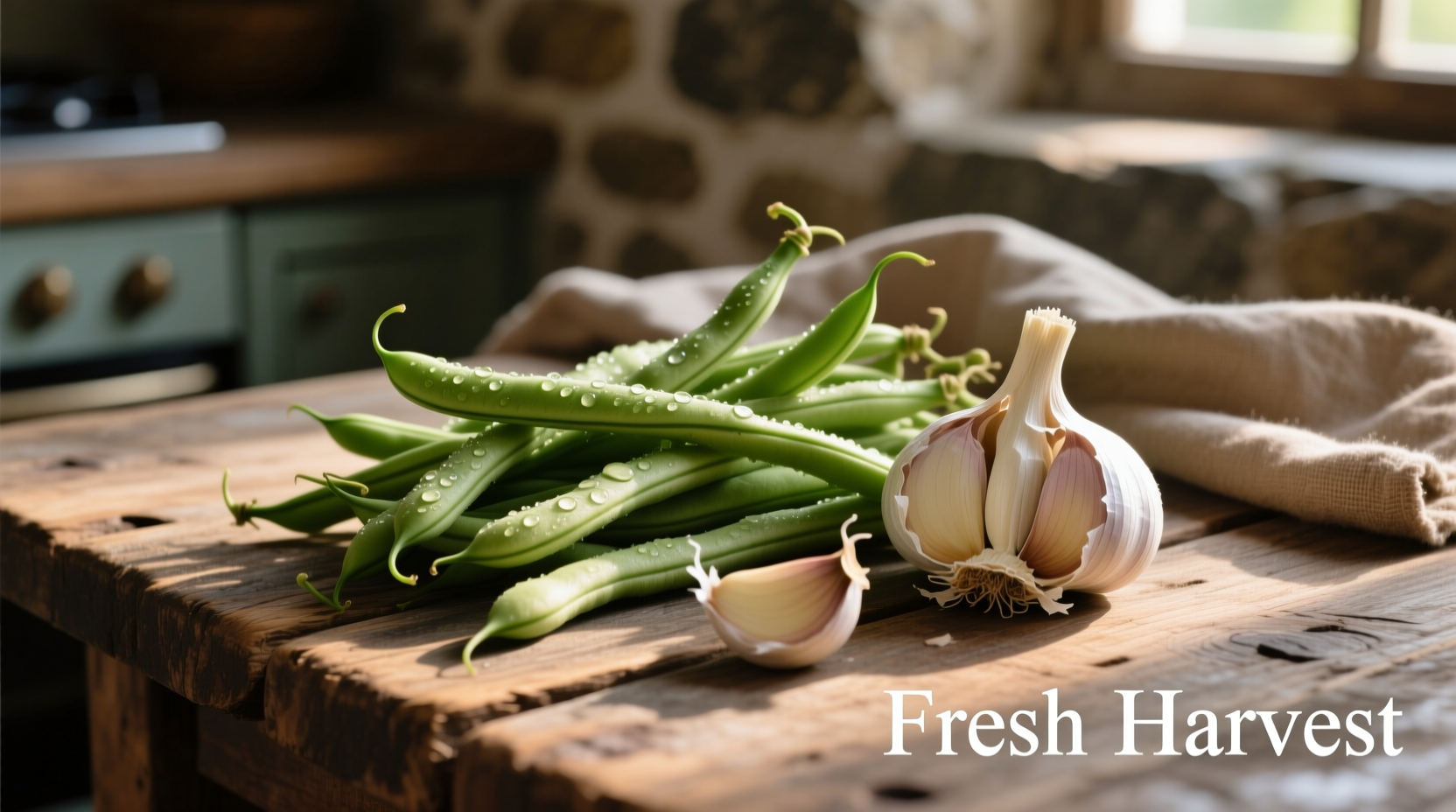String beans and garlic create a classic flavor pairing that delivers vibrant color, crisp texture, and aromatic depth when prepared correctly. The ideal cooking method involves sautéing fresh string beans in olive oil with minced garlic for 6-8 minutes until tender-crisp, preserving nutrients while developing rich umami notes through the Maillard reaction.
Discover how to transform this simple ingredient combination into a restaurant-quality side dish that complements everything from grilled meats to vegetarian mains. Whether you're a beginner cook or seasoned home chef, these science-backed techniques ensure perfectly cooked string beans with garlic every time—without the common pitfalls of mushiness or burnt garlic.
Why String Beans and Garlic Belong Together
The culinary magic happens when allicin from freshly minced garlic interacts with the natural sugars in string beans during cooking. This chemical reaction creates complex flavor compounds that neither ingredient achieves alone. According to research from the USDA Food Research Laboratory, properly cooked string beans retain up to 90% of their vitamin C content while garlic's beneficial allicin compounds remain stable when cooked below 140°F (60°C).
| Cooking Method | Texture Result | Garlic Flavor Development | Nutrient Retention |
|---|---|---|---|
| Sautéing (6-8 min) | Tender-crisp | Optimal aroma without bitterness | 85-90% vitamins preserved |
| Boiling (10+ min) | Mushy | Flavor dissipates in water | 40-50% vitamins lost |
| Roasting (20 min) | Caramelized edges | Deep, sweet complexity | 75-80% vitamins preserved |
Step-by-Step Preparation Timeline
Follow this precise sequence for flawless results every time. Professional chefs at the Culinary Institute of America emphasize timing as the critical factor in vegetable preparation:
- 0-2 minutes: Heat 2 tbsp olive oil in skillet over medium heat (not smoking)
- 2-3 minutes: Add trimmed string beans in single layer (crowding causes steaming)
- 3-7 minutes: Cook undisturbed to develop caramelization, then toss occasionally
- 7 minutes: Add minced garlic (never before—the lower burning point ruins flavor)
- 7-8 minutes: Toss constantly until garlic becomes fragrant (30-60 seconds)
- 8 minutes: Finish with lemon zest and sea salt to enhance natural flavors
Avoiding Common Cooking Mistakes
Most home cooks make these critical errors that compromise texture and flavor:
- Adding garlic too early—burns at 325°F while string beans need 375°F for proper sear
- Overcrowding the pan—creates steam instead of desirable caramelization
- Using pre-minced garlic—lacks enzymatic reaction of freshly minced cloves
- Underseasoning—string beans require more salt than most vegetables
"The moment garlic hits the oil should be precisely timed—too early creates bitterness, too late misses flavor development," explains Antonio Rodriguez, chef and culinary educator. "Freshly minced garlic added in the final minute creates the perfect aromatic finish without burning." 
Contextual Applications and Limitations
This preparation method works exceptionally well for:
- Mediterranean and Asian-inspired dishes (add soy sauce or lemon)
- Meal prep containers (stays crisp for 3-4 days when properly cooled)
- Weeknight dinners requiring under 15 minutes preparation
However, avoid this technique when:
- Preparing for large gatherings (batch cooking leads to uneven results)
- Using frozen string beans (requires different moisture management)
- Creating cold salads (raw garlic becomes overpowering when chilled)
Advanced Flavor Enhancements
Elevate your string beans and garlic with these professional techniques:
- Garlic oil infusion: Steep whole cloves in warm oil for 10 minutes before cooking, then remove
- Acid balance: Finish with 1 tsp sherry vinegar to brighten earthy notes
- Texture contrast: Sprinkle with toasted almond slivers before serving
- Umami boost: Add 1 tsp fish sauce (undetectable but enhances depth)
For meal preppers, store cooked string beans in airtight containers with a paper towel to absorb excess moisture. Reheat in a hot skillet rather than microwave to restore crisp texture—this technique maintains the ideal 90-100°F serving temperature recommended by food safety experts at FDA Food Code.
Perfect Pairings for Your Plate
This versatile side complements numerous main courses:
- Grilled salmon with lemon-dill sauce
- Pan-seared chicken with white wine reduction
- Beef stir-fry with ginger and sesame
- Eggplant Parmesan for vegetarian mains
When planning your menu, remember that properly cooked string beans with garlic should maintain vibrant green color and slight resistance when bitten—this indicates optimal nutrient retention and texture. The dish works particularly well in spring and summer menus when fresh string beans are at their peak season.











 浙公网安备
33010002000092号
浙公网安备
33010002000092号 浙B2-20120091-4
浙B2-20120091-4